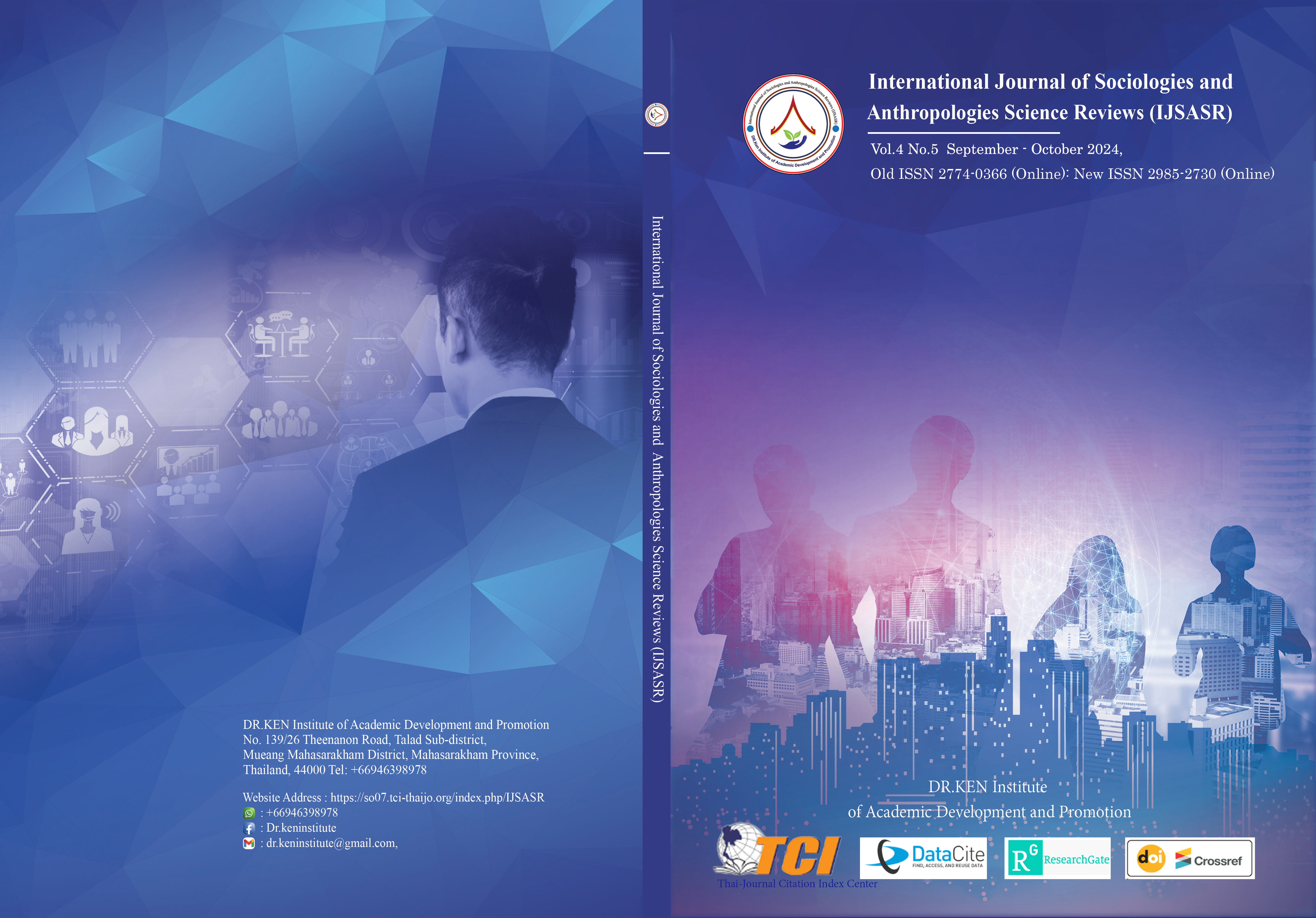A Guide to the Application of Modern Information Technology in Higher Vocational Colleges: A Case Study of China Chongqing Wanzhou Vocational Education Center
Main Article Content
Abstract
Background and Aims: With the development of information technology, flipped classrooms, micro-courses, MOOCs, and other educational means have been gradually applied to education and teaching, which not only changes the teaching methods of teachers but also promotes the transformation of teaching management means. This study aims to investigate and analyze the use of new ICT and provide suggestions for guiding the development and use of modern information technology in Chongqing Wanzhou Vocational Education Center.
Methodology: Using random sampling, 90 respondents were selected from 30 students, teachers, and administrators of the Chongqing Vocational Education Center. Interviews were conducted according to the outline, and detailed interview answers were recorded with the consent of the respondents. After the interview, valid information was extracted for follow-up analysis.
Results: It is found that there are some problems in the application of modern information technology in Chongqing Vocational Education Center. The use of modern information technology in schools is hampered by issues including passive teaching techniques, poorly designed curricula, and a lack of educational resources. These issues prevent talent development programs from being tailored to the needs of the job market and impede students' overall growth. These problems are further compounded by traditional teaching evaluation techniques, which impede the transition to a more objective and data-driven educational approach by lacking thorough student feedback.
Conclusion: The Chongqing Vocational Education Center's use of contemporary information technology has exposed challenges like poor curriculum design, passive teaching approaches, and a lack of educational resources, which hinder talent development and impede students' overall development. Furthermore, by not offering comprehensive student feedback, traditional teaching evaluation methods exacerbate these issues and impede the shift to a more objective and data-driven educational paradigm.
Article Details

This work is licensed under a Creative Commons Attribution-NonCommercial-NoDerivatives 4.0 International License.
Copyright on any article in the International Journal of Sociologies and Anthropologies Science Reviews is retained by the author(s) under the under the Creative Commons Attribution-NonCommercial-NoDerivatives 4.0 International License. Permission to use text, content, images, etc. of publication. Any user to read, download, copy, distribute, print, search, or link to the full texts of articles, crawl them for indexing, pass them as data to software, or use them for any other lawful purpose. But do not use it for commercial use or with the intent to benefit any business.

References
Bi, T. (2021). A Study of the Application of Modern Information Technology in Primary School Chinese Teaching. International Journal of Elementary Education. 8(3),63. DOI:10.11648/j.ijeedu.20190803.12
Danilchenko, L. (2017). Informatization of regional education organizations management: the experience of Sevastopol. Interak tiNauka, 23, 1032-1039.
Gong, T. (2021). Reform of the teaching methods of modern apprenticeship talent training in higher vocational colleges under the background of informatization. Career Time and Space, 5(1), 78-108.
He, X. (2017). Exploration and thinking on computer teaching methods in vocational schools. China Management Informatization, 6, 12-13.
Huang, L. (2019). Research on the information teaching practice of hotel management major. China Management Informatization, 13, 12-13.
Kumar, A., & Bhalla, R. (2019). Role of virtual reality in vocational education and training: An exploratory study. Education and Information Technologies, 24(3), 1815-1835.
Li, C. (2019). Innovation essence and change trend of "Internet+education". Distance Education Journal, 34 (4), 3-8.
Li, X., & Zhang, J. (2020). Application of modern information technology in vocational education and its innovative development strategies. International Journal of Emerging Technologies in Learning (iJET), 15(2), 96-107.
Lu, J. (2017). Analysis of the problems and countermeasures of ideological and political education management in vocational schools in the Internet era. Youth, 31, 134.
Mioduser, D., & Nachmias, R. (2017). Analysis Schema for the Study of Domains and Levels of Pedagogical Innovation in the Schools Using ICT. Nether lands: Kluwer Academic Publishers, 2017, 23-36
Niculescu, B.O., & Obilisteanu, G. (2020). Relational Aspects between ICT and the Modernization of Differentiated and Individual Teaching of Foreign Languages in Higher Education. Scientific Bulletin, 12, 28-30.
Ortega, M., & Bravo, J. (2020). Computers and Education in the 21st Century. Netherlands: Kluwer Academic Publisher, 2020, 209-212.
Petrova, A.S., Levkina, N.N., & Afanasyeva, I.V. (2017). Informatization of education: problems and prospects. Interaktivnaa Nauka, 21, 273-282.
Qin, H., & Zhang, W. (2021). The essential characteristics and development trend of "Internet+education". Education Research, 6, 8-10.
Sarah, Y. (2019). Implementing government policy on ICT in education: Lessons learned. Education and Information Technologies, 11, 385-4004.
Wang, M., Wang, R., & Pan, L. (2021). Innovation of talent training mode for civil Engineering professionals under the background of modern information technology. Employment and Security, 24, 3-10.
Wu, H. (2018). Construction and practice of information management system for in-post practice in vocational colleges. Modern Vocational Education, 24, 14-20.
Zhang, X. (2022). Research on the modern information technology talent training mode in higher vocational colleges under the "1 + X" vocational skill certificate system. Computers and Telecommunications, 5, 12-20.
Zhang, Y. (2020). "Internet+education" concept and model analysis. China Higher Education Research. 2, 70-73.
Zheng, S., Yang, Y., Cui, D., & Wang, X. (2018). Application of artificial intelligence technology in education and teaching. In 2018 4th International Conference on Control, Automation and Robotics (ICCAR) (pp. 351-355). IEEE.






